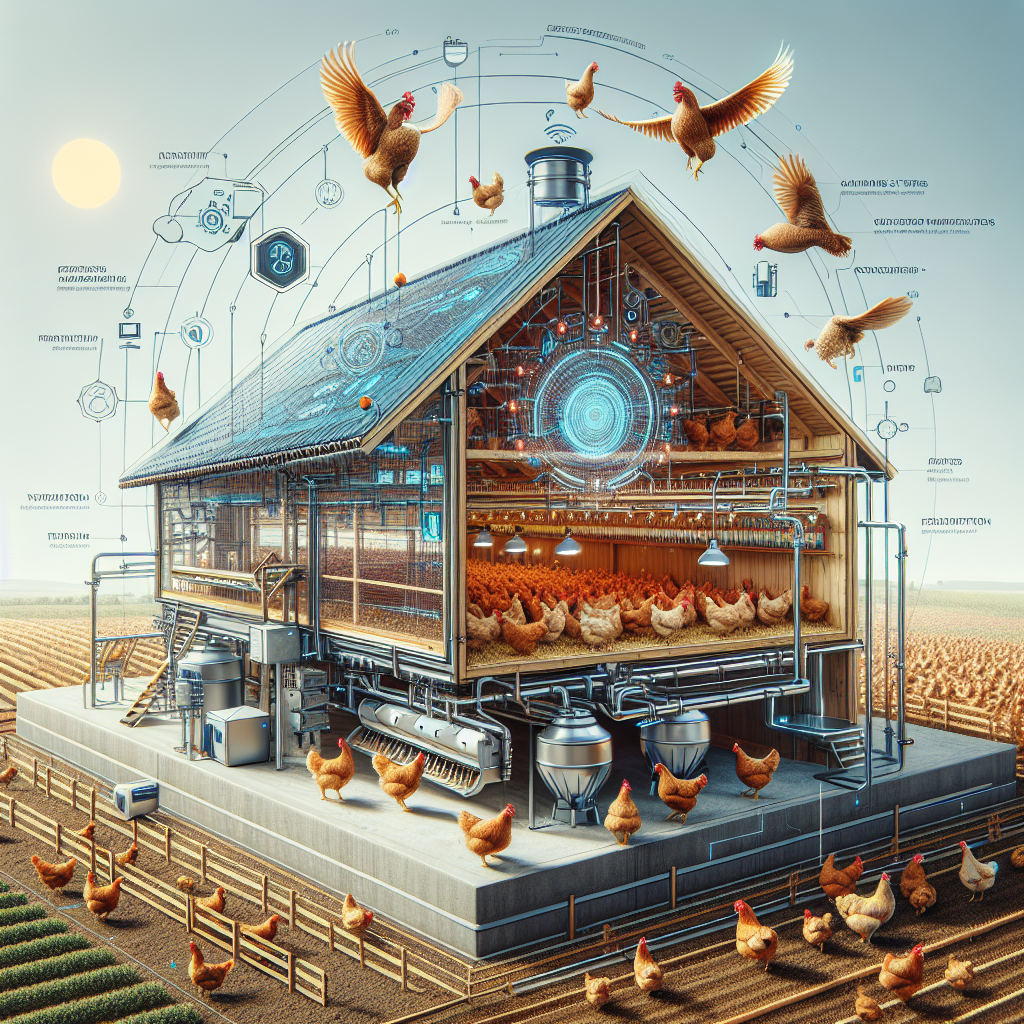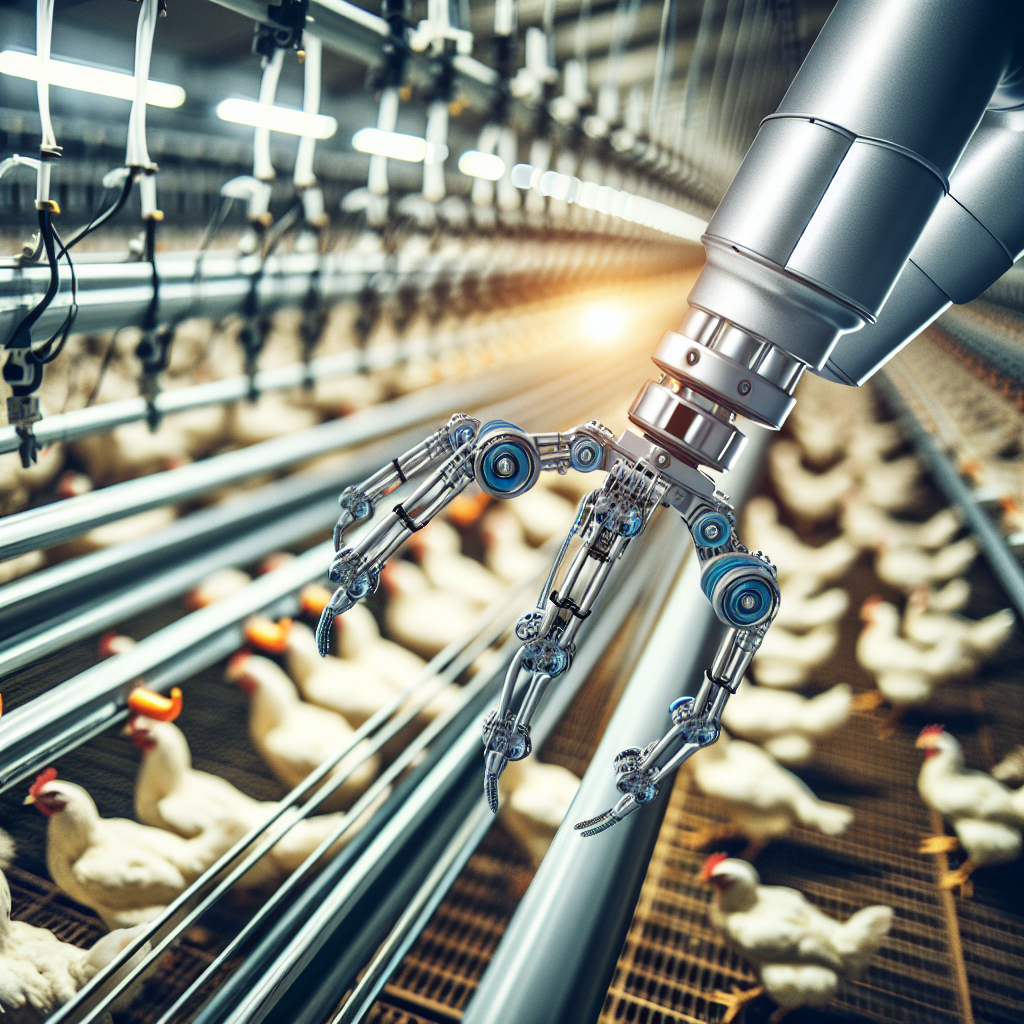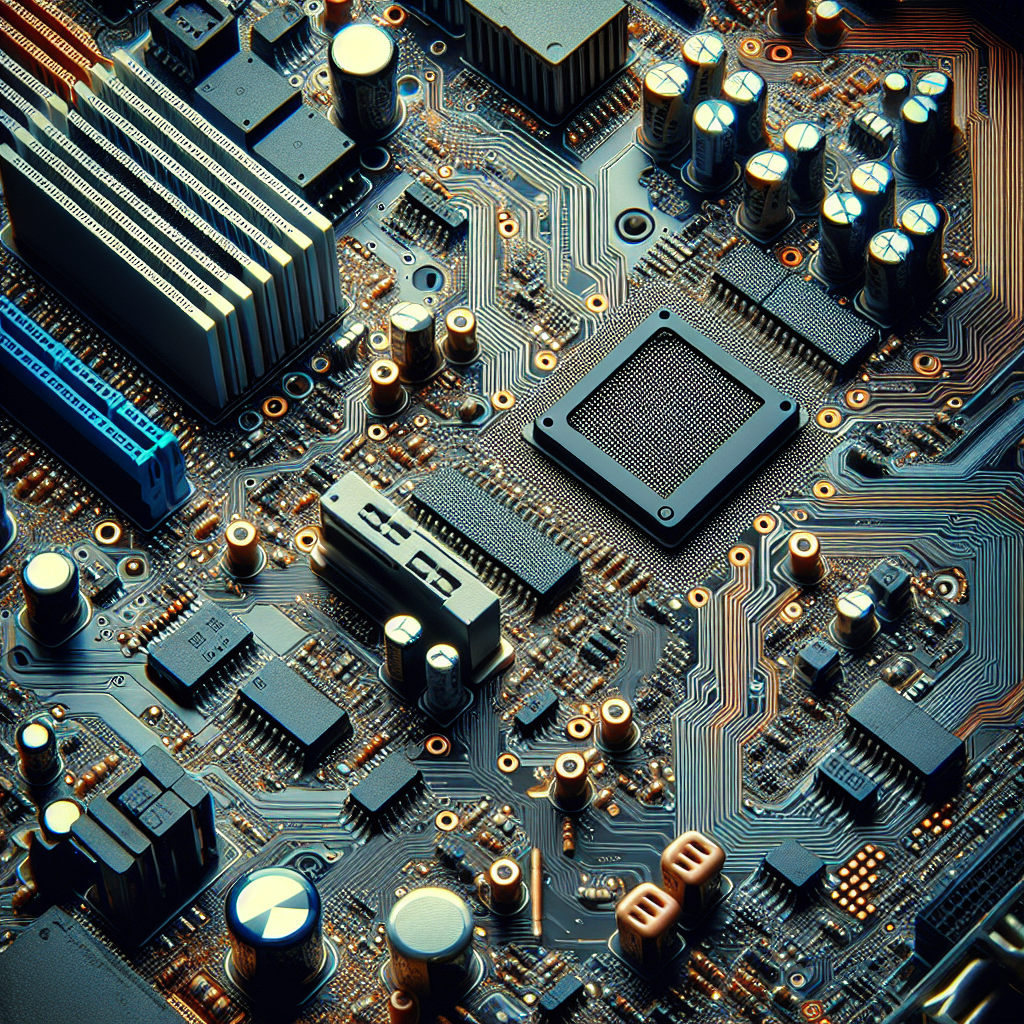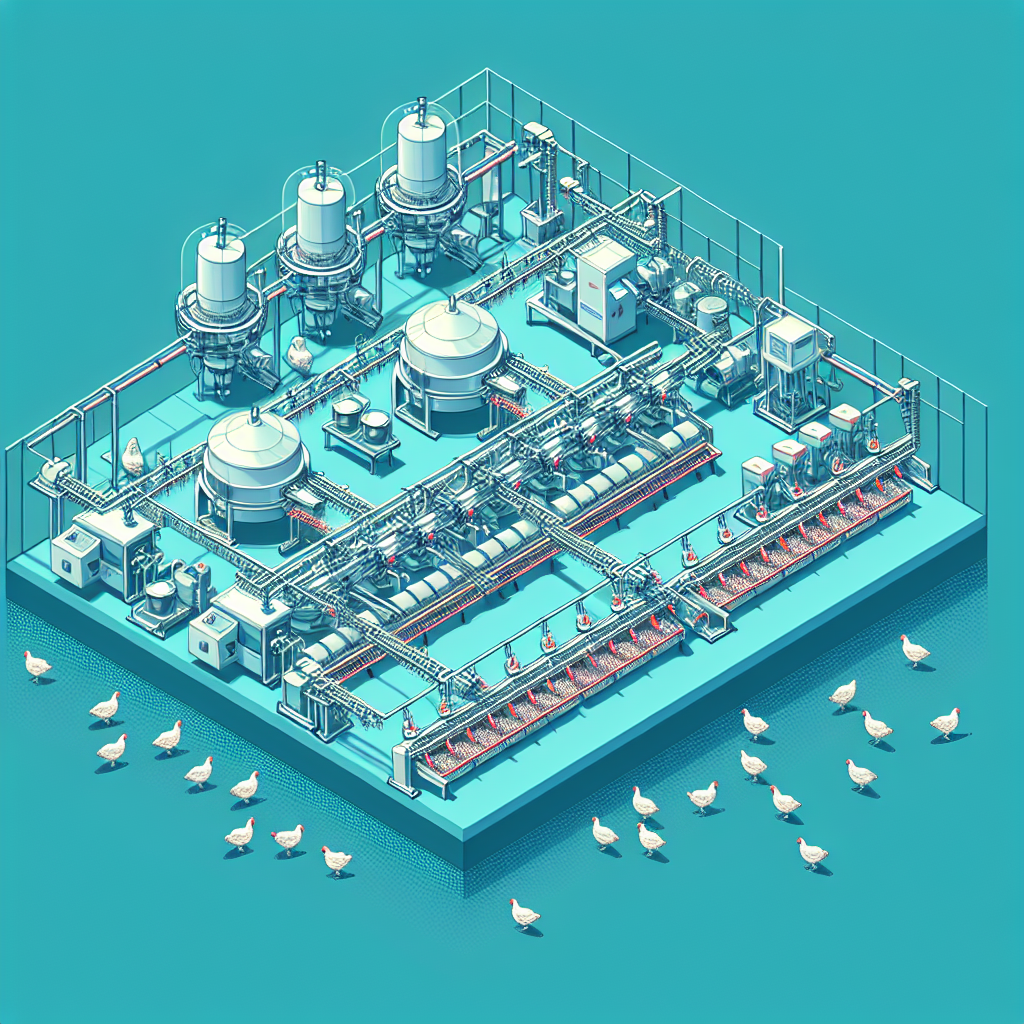Have you ever wondered how technology can revolutionize traditional chicken farming practices? In this article, we will explore the important considerations you should make when integrating technology into your chicken farming operations. From automated feeding systems to smart monitoring devices, we will discuss how these advancements can improve productivity, efficiency, and overall yield. So, whether you’re a seasoned chicken farmer or someone looking to venture into poultry farming, read on to discover how technology can enhance your farming practices and make your life easier.
Infrastructure
Assess current infrastructure
Before integrating technology into your traditional chicken farming practices, it’s important to assess your current infrastructure. This includes evaluating the condition of your buildings, equipment, and utilities such as power and internet access. Determine whether any repairs or upgrades are necessary to support the implementation of new technologies.
Determine necessary upgrades
Once you have assessed your current infrastructure, it’s time to determine the necessary upgrades. This may involve installing new electrical wiring, upgrading internet connectivity, or improving the ventilation system in your chicken houses. Identifying these upgrades will ensure that your infrastructure can effectively support the integration of technology.
Consider costs and benefits
When integrating technology into your chicken farming practices, it’s essential to consider the costs and benefits. Evaluate the financial investment required to implement new technologies and weigh it against the potential advantages. Will the technology improve efficiency, reduce labor costs, or enhance the health and well-being of your chickens? Understanding the costs and benefits will help you make informed decisions.
Ensure reliable access to power and internet
Reliable access to power and internet is crucial when integrating technology into your chicken farming practices. Power outages can disrupt automated systems, while a stable and fast internet connection is necessary for data management, remote monitoring, and communication. Ensure that you have reliable power sources, backup generators, and stable internet connectivity to avoid interruptions in your technological integration efforts.
Automation
Evaluate potential tasks for automation
Automation can significantly enhance the efficiency and productivity of your chicken farming operations. Evaluate the various tasks involved, such as feeding, watering, egg collection, and waste management, to determine which ones can be automated. Identifying these tasks will help you prioritize the implementation of automated systems.
Research available technologies
Once you have determined the tasks suitable for automation, research the available technologies in the market. Look for automated systems specifically designed for chicken farming, such as feeding systems, automated egg collection systems, and waste management solutions. Consider factors like reliability, ease of use, and compatibility with your existing infrastructure.
Consider cost-effectiveness
When considering the implementation of automated systems, it’s important to assess their cost-effectiveness. Evaluate the upfront costs, ongoing maintenance expenses, and potential savings in labor costs and operational efficiency. Choose automation solutions that offer the best return on investment and align with your budgetary considerations.
Implement automated systems gradually
Integrating automation into your traditional chicken farming practices should be done gradually to minimize disruptions and allow for adjustments. Start with automating one task or area of your operation and monitor its performance closely. Once you are satisfied with the results, gradually implement automation in other areas as well. This phased approach will help you manage the transition effectively.
Data Management
Identify key data to collect
When integrating technology into your chicken farming practices, collecting and analyzing data is essential for decision-making. Identify the key data points that are relevant to your operation, such as feed consumption, water usage, temperature, humidity, and egg production. Understanding the specific data you need will guide your selection of data management systems.
Research data management systems
To effectively manage and analyze the data collected, research the available data management systems. Look for solutions that are tailored to agriculture or poultry farming, as they will better suit your needs. Consider features like data storage, analysis tools, and user-friendly interfaces to ensure that the chosen system can handle the volume and complexity of your data.
Ensure data security and privacy
With the integration of technology comes the need to protect your data from unauthorized access and ensure privacy. Choose data management systems that have robust security measures in place, such as encrypted data storage, access controls, and regular backups. It’s important to comply with data protection regulations to safeguard sensitive information.
Analyze collected data for decision-making
Once you have collected and organized your data, it’s time to analyze it to make informed decisions. Utilize analytical tools and techniques to identify patterns, trends, and correlations in the data. This analysis can provide valuable insights into improving efficiency, optimizing feed and water management, and identifying potential health issues in your chicken flock.
Health Monitoring
Research technology for health monitoring
Keeping your chicken flock healthy is vital for the success of your farming operation. Research the available technologies for health monitoring, such as sensors and wearable devices specifically designed for poultry. These technologies can help you detect early signs of diseases or abnormalities, allowing for timely intervention and prevention.
Consider sensors and wearable devices
Sensors and wearable devices can provide real-time monitoring of various health parameters in your chickens. They can track vital signs, temperature, movement patterns, and even detect stress or distress signals. By using these technologies, you can proactively identify any health issues and ensure prompt intervention to minimize the spread of diseases.
Implement disease detection systems
Integrating technology into health monitoring also includes implementing disease detection systems. These can include automated detection of bacterial or viral infections, monitoring air quality in the chicken houses to mitigate respiratory diseases, or using imaging technologies to identify physical abnormalities in individual birds. Disease detection systems can help you take corrective actions swiftly and effectively.
Utilize data for early intervention
The data collected through health monitoring technologies can be utilized for early intervention. By analyzing the data for patterns or anomalies, you can identify potential health risks before they escalate. Utilize this information to adjust feed composition, alter environmental conditions, or implement targeted treatments to promote the overall health and well-being of your chicken flock.
Environmental Control
Explore climate control options
Maintaining optimal environmental conditions is crucial for the health and productivity of your chickens. Explore climate control options such as automated ventilation systems, temperature control mechanisms, and humidity regulation. Ensuring a comfortable and stress-free environment will contribute to improved growth and egg production.
Consider ventilation and temperature management
Proper ventilation and temperature management are essential elements of environmental control. Evaluate the ventilation systems in your chicken houses and consider upgrading them to provide adequate airflow and remove excessive heat or humidity. Install temperature monitoring and control systems to maintain optimal conditions throughout the year.
Evaluate energy-saving technologies
When integrating technology into environmental control, consider energy-saving technologies. Look for energy-efficient ventilation systems, LED lighting solutions, and smart thermostats. These technologies can reduce energy consumption, lower utility costs, and contribute to a more sustainable farming operation.
Implement lighting solutions for productivity
Lighting plays a vital role in the productivity of your chickens. Implement lighting solutions that mimic natural daylight cycles and promote healthy growth and egg production. Consider automated lighting systems that can adjust the intensity and duration of light to optimize the biological rhythms of your flock.
Feed Management
Investigate automated feeding systems
Automating the feeding process can lead to significant improvements in feed management. Investigate the available automated feeding systems specifically designed for poultry farming. These systems can dispense precise amounts of feed at scheduled intervals, ensuring that your chickens receive adequate nutrition while reducing wastage.
Consider feed quality monitoring
Maintaining high-quality feed is crucial for the health and growth of your chickens. Consider implementing feed quality monitoring systems that can analyze the nutritional composition, detect contaminants, and ensure optimal feed freshness. Monitoring feed quality will help you identify any issues early on and take corrective actions promptly.
Research precise feeding solutions
Precision feeding allows you to tailor the nutritional needs of your chickens more accurately. Research precision feeding solutions that can adjust feed composition based on factors like age, breed, and production stage. These technologies can optimize feed utilization, improve growth rates, and maximize the overall efficiency of your farming practices.
Ensure proper feed storage and distribution
Integrating technology into feed management should also address proper storage and distribution. Invest in automated feed storage solutions that maintain proper hygiene and prevent contamination. Implement systems that distribute feed evenly throughout the livestock areas to ensure optimal access for all chickens.
Water Management
Assess water supply and quality
Water is an essential resource for your chicken farming operation, and managing it effectively is crucial. Assess your water supply and quality to ensure that it meets the necessary standards for your chickens’ health and hygiene. Address any issues with water sources, such as contaminants or inadequate supply, before integrating technology into water management.
Explore automated watering systems
Automating the watering process can optimize water utilization and ensure a steady supply for your chickens. Explore available automated watering systems that can dispense water at regular intervals and allow for automated refilling. These systems can help reduce water wastage and ensure that your chickens have access to clean water at all times.
Implement water usage monitoring
Integrating technology into water management also involves implementing water usage monitoring systems. These systems can track and analyze water consumption patterns, helping you identify any irregularities or potential leaks. Monitoring water usage will enable you to optimize your water resources and identify any anomalies that may indicate health or equipment issues.
Ensure adequate water filtration
Water filtration is critical to maintaining the quality and safety of the water provided to your chickens. Implement appropriate water filtration systems to remove impurities, contaminants, and potentially harmful microorganisms. Ensuring adequate water filtration will contribute to the overall health and well-being of your flock.
Biosecurity
Research disease prevention technologies
Biosecurity measures are essential to prevent the introduction and spread of diseases in your chicken farming operation. Research disease prevention technologies such as disinfection systems, air filtration, and pest control measures. Implementing these technologies will help minimize health risks and maintain a biosecure environment for your chickens.
Consider access control systems
Access control systems can regulate and monitor the movement of individuals, vehicles, and equipment in and out of your farm. Consider implementing access control measures that ensure only authorized personnel have entry, reducing the risk of disease transmission. This includes restricting access to specific areas and implementing biosecurity protocols for visitors and deliveries.
Implement biosecurity measures
Integrating technology into biosecurity includes implementing a range of measures to protect your chickens from diseases. These measures can include establishing quarantine areas, implementing footbaths and hand sanitization stations, and using customized protective clothing. Ensure that your biosecurity measures align with industry standards and best practices.
Train staff on biosecurity protocols
Proper training and education are crucial when integrating technology into biosecurity. Train your staff on biosecurity protocols, hygiene practices, and the proper use of technology and equipment. Regularly update and reinforce these training programs to ensure that all employees understand and adhere to the necessary biosecurity measures.
Labor and Training
Assess impact on labor requirements
The integration of technology into traditional chicken farming practices can have a significant impact on labor requirements. Assess how the automation of tasks and the utilization of technology will affect the existing labor force. Determine any potential changes in job roles, tasks, or skill requirements to ensure a smooth transition and optimum utilization of human resources.
Consider necessary skill sets for employees
When integrating technology, it’s essential to consider the necessary skill sets for your employees. Identify any new skills or knowledge needed to effectively operate and maintain the technology and automated systems. Provide opportunities for training and upskilling to ensure that your employees can adapt to the changing requirements of your farming practices.
Provide training opportunities for staff
Invest in training programs that equip your staff with the necessary knowledge and skills to use and maintain the integrated technology. These training opportunities can include workshops, on-the-job training, or external courses. Regularly assess the training needs of your staff and provide ongoing support and development opportunities.
Ensure ongoing technical support
Having access to ongoing technical support is crucial when integrating technology into your farming practices. Establish relationships with technology providers, manufacturers, or technical experts who can provide assistance in troubleshooting, maintenance, and software updates. This ensures that any issues or challenges can be addressed promptly to minimize disruptions to your operations.
Regulatory Compliance
Research local and national regulations
When integrating technology into traditional chicken farming practices, it’s important to comply with local and national regulations. Research the specific regulations that govern poultry farming operations, including requirements related to biosecurity, environmental impacts, and animal welfare. Stay informed about any updates or changes to these regulations to ensure ongoing compliance.
Ensure compliance with animal welfare standards
Integrating technology should prioritize the welfare and well-being of your chickens. Ensure that the automated systems and technological solutions you implement comply with animal welfare standards and best practices. This includes providing adequate space, proper ventilation, comfortable temperature, and access to food and water.
Consider potential environmental impacts
While integrating technology can bring numerous benefits, it’s also essential to consider potential environmental impacts. Evaluate how the technology and automation solutions may affect energy consumption, waste management, and natural resource use. Implement measures to minimize these impacts, such as energy-saving technologies, waste management systems, and sustainable farming practices.
Seek legal advice if necessary
If you have any concerns or questions regarding regulatory compliance when integrating technology, it’s advisable to seek legal advice. Legal professionals specializing in agricultural law can guide you on the specific regulations and compliance requirements for your geographical location. Consulting with legal experts ensures that you are fully aware of your obligations and can make informed decisions.
By carefully considering and addressing these various considerations, you can successfully integrate technology into traditional chicken farming practices. The right infrastructure, automation, data management, health monitoring, environmental control, feed and water management, biosecurity, labor and training, and regulatory compliance measures can boost efficiency, productivity, and the overall success of your chicken farming operation. Embracing technology in a methodical and well-planned manner can help you stay ahead in an ever-evolving industry and ensure sustainable and responsible farming practices.




